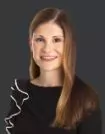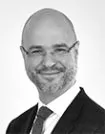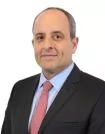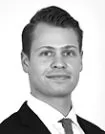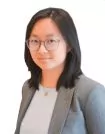CLAIM CONSTRUCTION
Egenera, Inc. v. Cisco Systems, Inc., 972 F.3d 1367, Appeal No. 19-2015, Prost, Reyna, Stoll (August 28, 2020)
KEY TAKEAWAY
Means-plus-function claiming pursuant to 35 U.S.C. § 112(f) is invoked if the claim limitation does not recite sufficient structure to perform the claimed functions. The bar for rebutting the presumption is low, and the claim term "logic" is nothing more than a generic substitution for "means."
FACTS
The claimed invention relates to a control node of a virtual network having a "logic to modify" received messages prior to transmission to an external network. The construction of the term "logic to modify" was at issue in the context of the claim term: "at least one control node . . . including logic to modify . . . received messages to transmit said modified messages to the external communication network." The district court construed the term as a means-plus-function element invoking 35 U.S.C. § 112(f). The Federal Circuit affirmed.
DISCUSSION
Relying on Williamson v. Citrix Online, LLC, the Federal Circuit held that the bar for rebutting the presumption against means-plus-function claiming is low. 792 F.3d 1339, 1346 (Fed. Cir. 2015). The question is not whether a claim term recites any structure but whether it recites sufficient structure to perform the claimed functions. Moreover, the inclusion of the limitation at-issue within a structure—i.e., the "control node"—did not automatically render the limitation itself sufficiently structural. As such, the court held that "logic," as used in the claim, is nothing more than a generic substitution for "means."
Godo Kaisha IP Bridge I v. TCL Commc'n Tech. Holdings Ltd., 967 F.3d 1380, Appeal No. 19-2215, Prost, Newman, O'Malley (August 4, 2002)
KEY TAKEAWAY
It is the fact-finder that determines the standard-essentiality of the patent claims at-issue as part of the infringement analysis, and not the court as part of claim construction.
FACTS
Patent Owner Godo Kaisha IP Bridge 1 ("IP Bridge") sued TCL Communication Technology Holdings Limited and related entities ("TCL"), alleging infringement of two patents. At trial, IP Bridge put forth evidence to demonstrate that the patents-in-suit are essential to the LTE standard and that TCL's accused devices are LTE-compatible. IP Bridge relied on Fujitsu Ltd. v.Netgear Inc., 620 F.3d 1321 (Fed. Cir. 2010), which held, in an appeal of a summary judgement decision, that a districtcourt may rely on an industry standard in analyzing infringement. The jury found TCL liable for infringement because thepatents were essential to the LTE standard and TCL's devices were compliant with the standard. On a motion for judgmentas a matter of law ("JMOL"), TCL argued that Fujitsu only applies where the patent owner asks the district court to assessessentiality—as a matter of law—in the context of construing the claims of the asserted patents. The district court deniedTCL's motion and TCL appealed.
DISCUSSION
The Federal Circuit noted that it has previously endorsed standard compliance as a way of proving infringement, but never addressed the issue of who determines standard-essentiality of the patent claims at-issue—the court or the fact-finder. The Federal Circuit found that TCL's appeal was based on a misreading of Fujitsu: Fujitsu was an appeal of a summary judgement decision, where there was no question of fact; therefore, in Fujitsu it was the court that analyzed essentiality. But that did not transform essentiality into a question of law. Moreover, the court found that determining essentiality during claim construction hardly makes sense, as essentiality is a fact question about whether the claim elements read onto mandatory portions of a standard that standard-compliant devices must incorporate. Such an inquiry is more akin to an infringement analysis than to a claim construction analysis.
Personalized Media Commc'ns, LLC v. Apple Inc., 952 F.3d 1336, Appeal No. 18-1936, Reyna, Taranto, Stoll (March 13, 2020)
KEY TAKEAWAY
Consistent statements in prosecution history are decisive as to the meaning of claim terms, even absent clear waiver.
FACTS
Apple filed a petition for inter partes review (IPR) challenging certain claims of a patent owned by Personalized Media Communications (PMC). At issue was the construction of the limitation "an encrypted digital information transmission including encrypted information." PMC argued that the broadest reasonable interpretation of the limitation must be limited to entirely digital transmissions. Apple, on the other hand, contended that it may include both a transmission with information that is not encrypted or digital—i.e., "an information transmission that is partially or entirely digital, at least a portion of which is encrypted." The Patent Trial and Appeal Board (PTAB) adopted Apple's construction and found the claims invalid. PMC appealed.
DISCUSSION
The court first analyzed the claim language and concluded that it neither precludes nor compels either interpretation. Then, the court turned to the specification and reached the same conclusion. Finally, the court turned to the prosecution history for guidance. The original claims did not include the claim terms "encrypted digital." To overcome art cited during prosecution, the patent owner twice distinguished its claims from references that disclose analog transmission through argument. The examiner was not persuaded by the arguments, and in response to yet another office action, the patent owner amended the claims to include the modifier "encrypted digital" and explained that the cited art "does not teach the encryption of an entire digital signal transmission." The PTAB, during the IPR, did not find that the patent owner's statements created a clear record of waiver, and as such, discounted those statements for the purpose of claim construction. The Federal Circuit disagreed, noting that "[e]ven where prosecution history statements do not rise to the level of unmistakable disavowal, they do inform the claim construction. An applicant's repeated and consistent remarks during prosecution can define a claim term—especially where, as here, there is 'no plain or ordinary meaning to the claim term' and the specification provides no clear interpretation." (internal quotations omitted).
OBVIOUSNESS
Alacritech, Inc. v. Intel Corp., et al., 966 F.3d 1367, Appeal No. 19-1467, Moore, Chen, Stoll (July 31, 2020)
KEY TAKEAWAY
A prior art reference does not teach away from the claim invention if it expresses an alternative preference, where the preference does not criticize, discredit or discourage the claimed invention.
FACTS
Intel filed for inter partes review (IPR) challenging certain claims of a patent owned by Alacritech. The patent relates to offloading network related processing tasks from a host computer's processor to an "intelligent network interface card" (INIC). The at-issue claim was directed to one such task that can be offloaded from the CPU to the INIC—the reassembly of data from packets received by the host computer from the network. The Patent Trial and Appeal Board (PTAB) found the claims invalid as obvious. In its reasoning, the PTAB recited "some of the parties' arguments in two terse paragraphs" and concluded without explanation that the prior art teaches the reassembly limitations.
DISCUSSION
The PTAB is required, pursuant to the Administrative Procedure Act, to "provide an administrative record showing the evidence on which the findings are based, accompanied by the agency's reasoning in reaching its conclusions." (quoting TQ Delta, LLC v. Cisco Sys., Inc., 942 F.3d 1352, 1358 (Fed. Cir. 2019), In re Lee, 277 F.3d 1338, 1342 (Fed. Cir. 2002)). This does not require a "perfect explanation," but does require that the PTAB provide a sufficient explanation. Under this standard, the Federal Circuit concluded that the PTAB's analysis falls short and remanded the issue for further consideration by the PTAB.
Alacritech also challenged the PTAB's finding that an ordinarily skilled artisan would have been motivated to combine two references, and specifically argued that one reference teaches away from the combination. The Federal Circuit found that the reference "merely expresses a preference and does not teach away from offloading processing from the CPU to a separate processor" where the reference stated "usually, the best approach is . . ." Because the reference merely expressed a general preference, but did not criticize, discredit, or discourage the claimed invention, the court found that it does not teach away from the claimed invention.
HVLPO2, LLC v. Oxygen Frog, LLC, 949 F.3d 685, Appeal No. 19-1649, Newman, Moore, Chen (February 5, 2020)
KEY TAKEAWAY
A lay witness cannot testify that a combination of prior art references would be obvious.
FACTS AND DISCUSSION
HVLPO2, LLC (HVO) sued Oxygen Frog for infringement of two patents directed to glass blowing methods and devices. The jury concluded that the asserted claims were obvious in view of two prior art references: a glass blowing Internet forum post and a video posted online by Mr. Piebes, a glass blowing artist. Mr. Piebes also provided testimony as a fact witness. He was not qualified as an expert yet testified that it would be obvious to modify a prior art system in a particular way. HVO objected to his testimony, but the district court overruled the objection and instead gave the jury a limiting instruction. The Federal Circuit reversed and ordered a new trial, finding that the limiting instruction was insufficient to cure the substantial prejudice caused by Mr. Piebes' testimony. The Federal Circuit found that Mr. Piebes' testimony was directed to the central legal and technical question at trial—i.e., obviousness—and, thus "in the clear purview of experts."
Click here to continue reading ...
The content of this article is intended to provide a general guide to the subject matter. Specialist advice should be sought about your specific circumstances.



